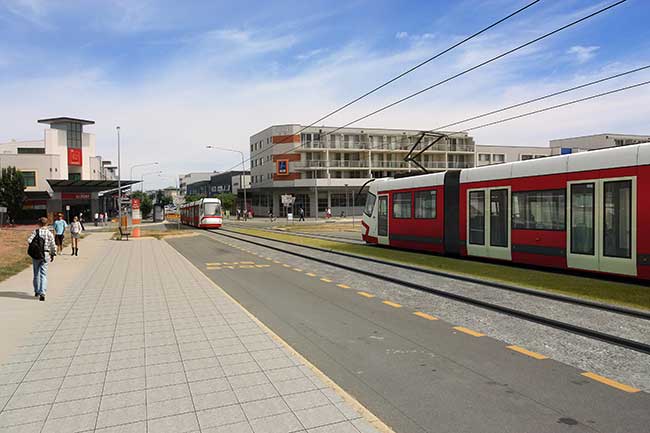The Australian Capital Territory government is continuing to forge ahead with plans to finally build a tramway through the heart of the nation’s capital after it selected a key consortium to provide technical advice for the delivery of the highly anticipated light rail project.
The move is the next step in making concrete plans to integrate a tramway network into Canberra’s public transport infrastructure and comes amid increased tension with the Federal government over the removal of free parking in the Parliamentary Triangle later this year.
Territory Minister for the Environment and Sustainable Development, Simon Corbell, has named the ‘Arup-led Consortium’ as the group that the government use, an alliance that will utilise the expertise from HASSELL and Parsons Brinkerhoff, local specialist consultants Brown Consulting, LandDATA Surveys, Phillip Chun Access, SLR Consulting, GML Heritage and dsb Landscape Architects.
The government says it hopes to “shape a world class light rail” for Canberra by using the Arup-led Consortium’s expertise in engineering, design, construction, operations, urban design, maintenance, network integration, sustainability, land development and safety management.
The naming of the group follows a tender process that started in December 2013.
Mr Corbell said the strong interest in the tender underlined the national significance of the project and aligned with the government’s desire to use the best skills and expertise to deliver a transformative light rail system in Canberra.
Transformation of the designer city’s dependence on cars is an issue close to the government’s heart because the relatively city is now starting to experience conspicuous growing pains like traffic congestion during peak periods.
A big challenge for Canberra is that it’s geographically dispersed population coupled with a relatively small population has made the city’s ACTION bus network run a poor second in terms of commuter preference.
The government is betting that establishing a dedicated tram run into the city from higher density suburban regions like Gungahlin will increase comfort and cut commuting times far enough to get people to leave their cars at home – or at least not drive them all the way to work.
“The members of this consortium have very recent and relevant experience doing similar work for current and planned light rail systems in Sydney, Perth, the Gold Coast and South Australia, in addition to many notable international light rail developments,” Mr Corbell said.
Prior to the appointment of the Arup-led Consortium, the ACT government ran a survey into the community demand for a light rail network.
This Light Rail Integration Study online survey received generally “positive” and “constructive” comments from over 370 Canberra residents.
Canberra isn’t the only city that has recently sought the assistance of an expert consortium.
In February 2014, the New South Wales government announced that three international consortia are in the running to build and operate the extensions to Sydney’s existing light rail network in the CBD and the South East Light Rail.
Sydney’s latest new light rail project is planned to link Circular Quay and Central Station, the Moore Park sporting and entertainment precinct including the Sydney Cricket Ground and Sydney Football Stadium, Randwick Racecourse, the University of NSW and Prince of Wales Hospital at Randwick.
The Sydney contract will be delivered as a Public Private Partnership “subject to value for money” and will cover the design, construction, services relocations, operation and maintenance of the 12-kilometre project, as well as the operation and maintenance of the Inner West Light Rail network.
The three short-listed consortia to tender for the Sydney project are SydneyConnect, iLinQ and Connecting Sydney.
SydneyConnect includes Serco Pty Ltd, John Holland Pty Ltd and Plenary Group Pty Ltd. iLinQ includes Keolis Downer, Balfour Beatty, McConnell Dowell, Bombardier and Macquarie Capital; and Connecting Sydney includes Transdev Pty Ltd, Alstom Transport Australia Pty Ltd and Capella Capital.
Transdev Pty Ltd presently operates the existing Sydney light rail network on behalf of Transport for NSW, which links Central Station to the inner western suburbs via Darling Harbour, The Star casino and the Sydney Fish Markets.
Comment below to have your say on this story.
If you have a news story or tip-off, get in touch at editorial@governmentnews.com.au.
Sign up to the Government News newsletter

